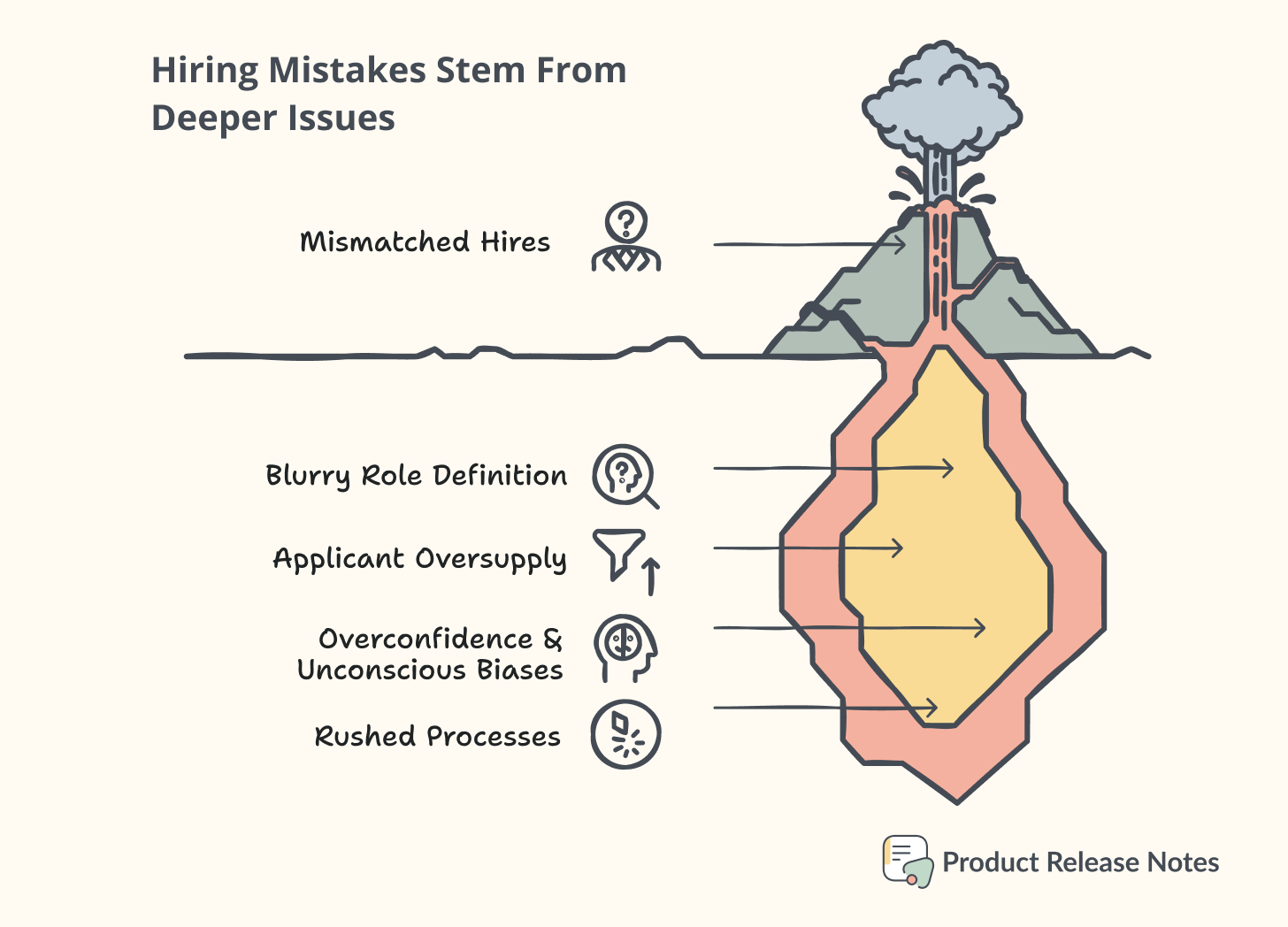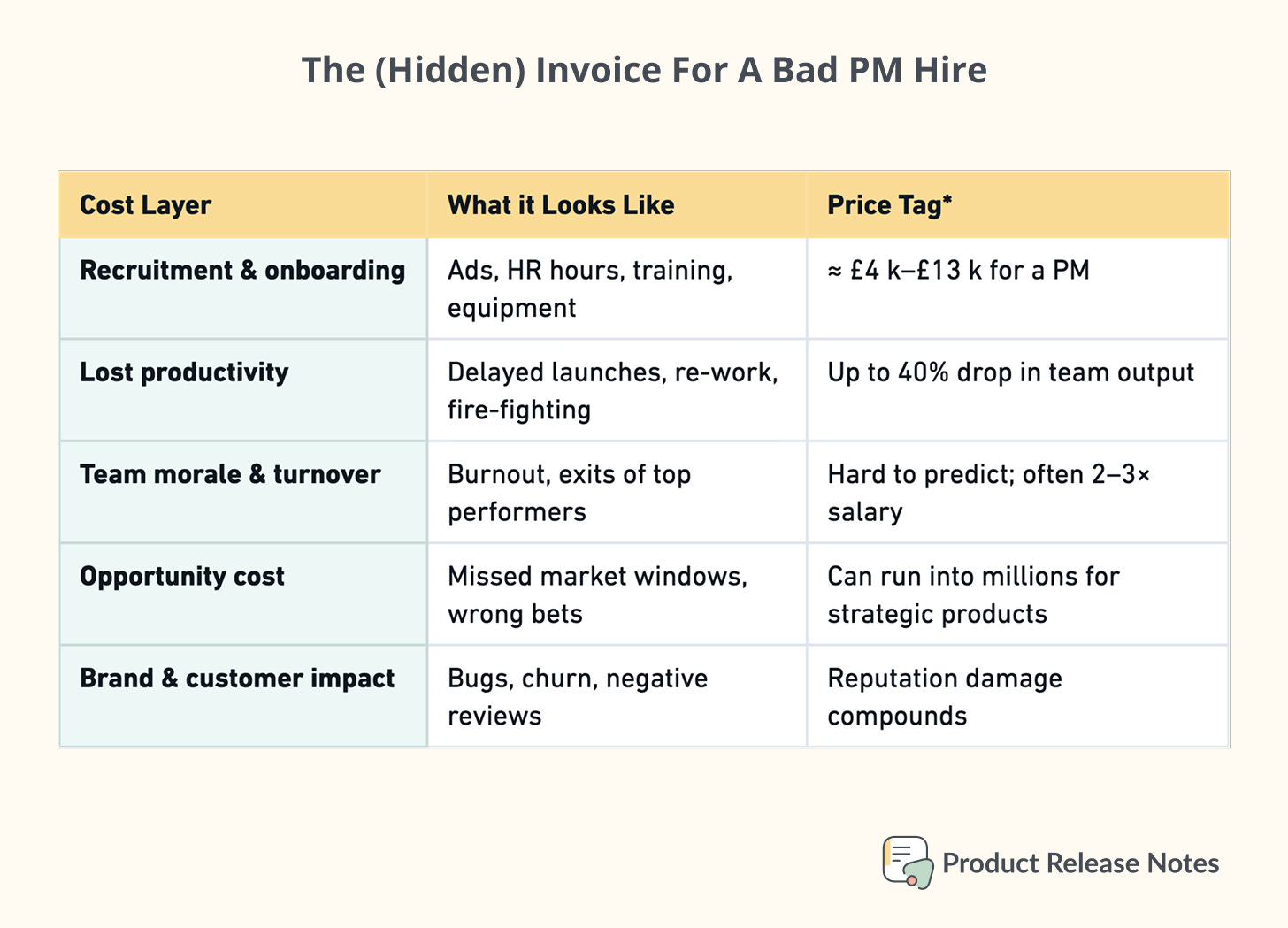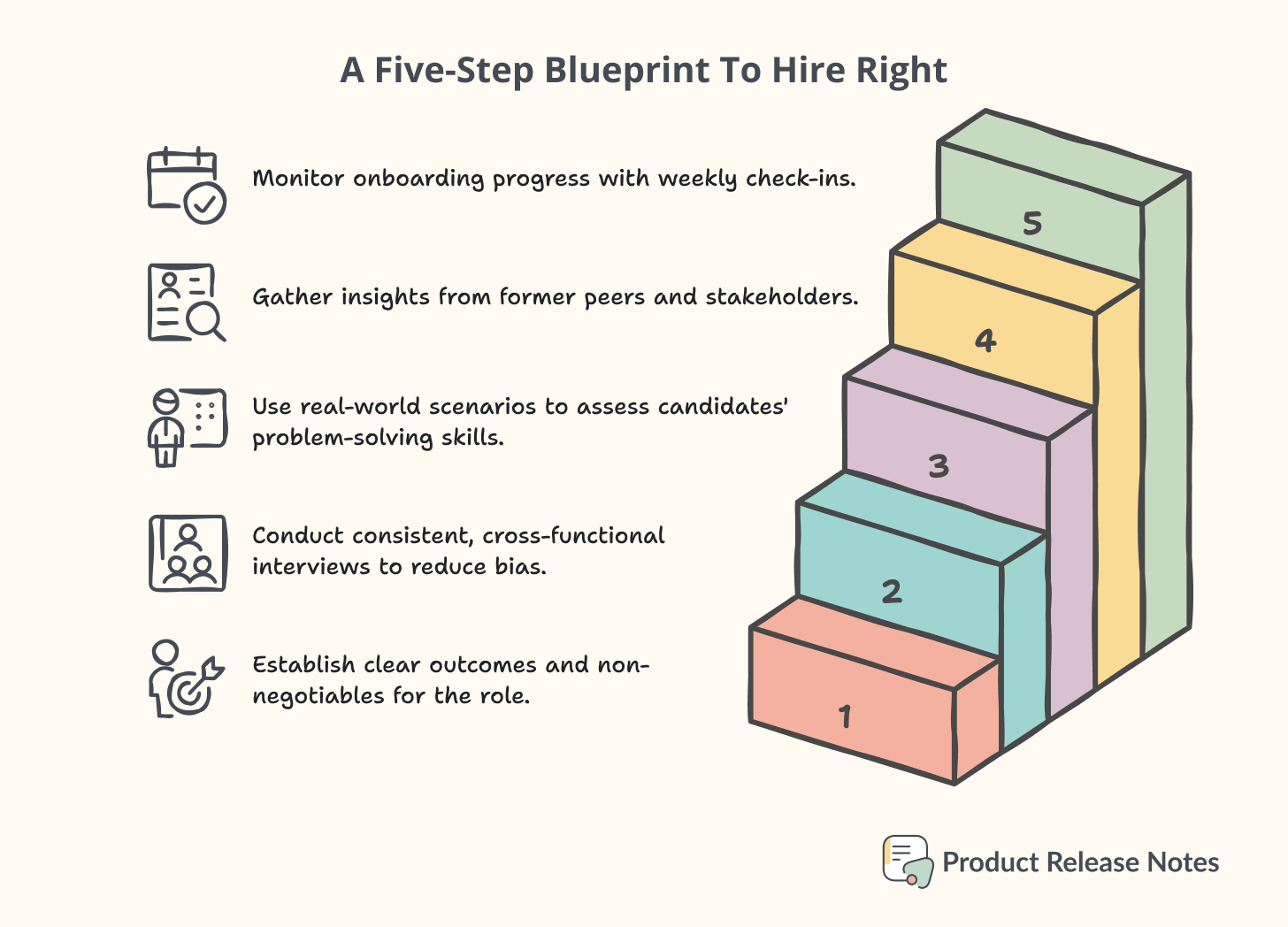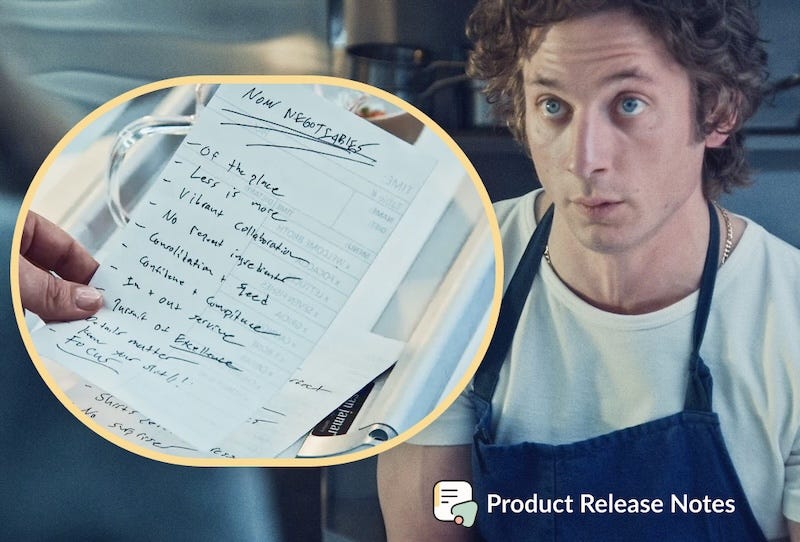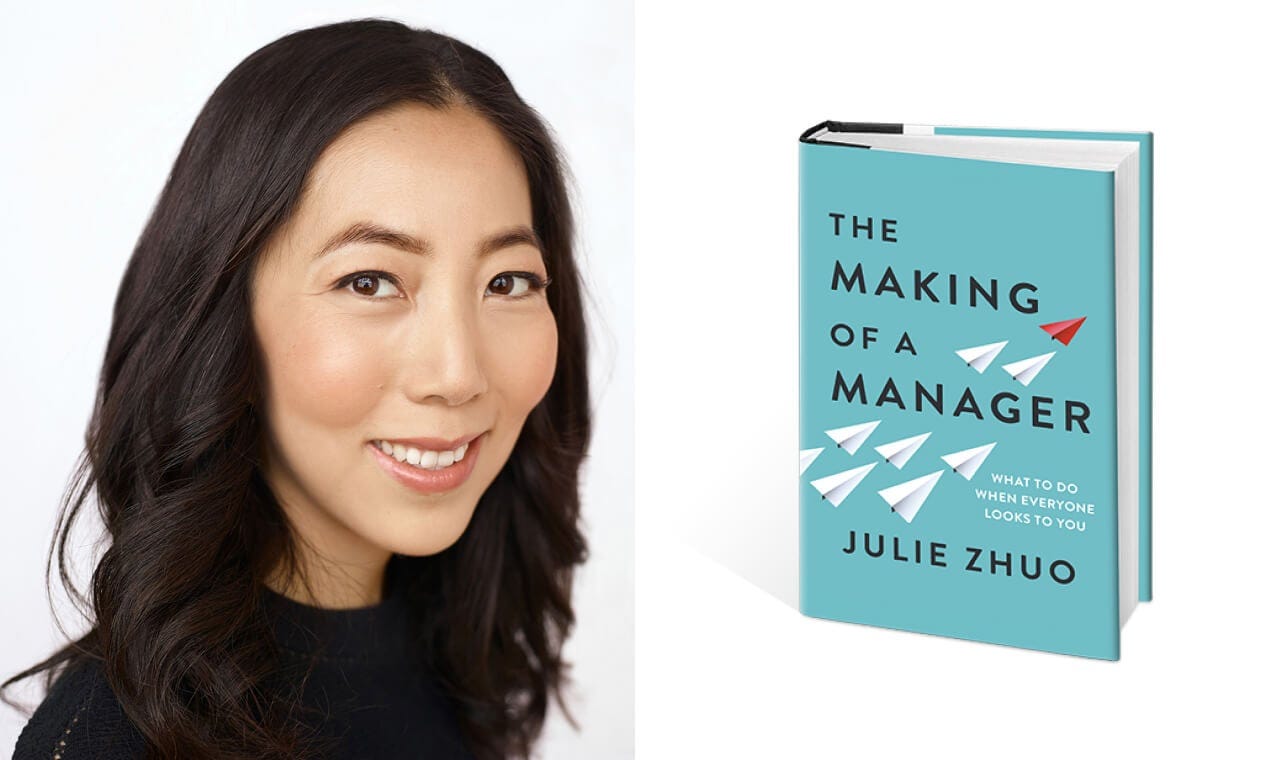How To Avoid The Hidden Costs Of Hiring Wrong
Product-first organizations keep discovering (the hard way) that a great interview is not the same as a great hire. Let’s unpack why the miss-hire happens, what it really costs, and how to hire right.
🚦 “We loved the candidate… until we didn’t.”
That line makes my stomach drop. Many organizations keep discovering (the hard way) this:
A great interview is not the same as a great hire.
Hiring the wrong product manager isn’t just a minor setback, it’s a costly mistake that ripples through teams, products, and your bottom line.
Let’s unpack why the miss-hire happens, what it really costs, and how to hire right without gambling your roadmap or your team morale. 👇
Why Bad Hires Happen
Despite meticulous interviews, companies often miss red flags, leading to mismatched hires who derail projects and drain resources. The harm includes lost revenue, crushed morale, and missed market opportunities.
Even smart companies still hire the wrong candidate for many reasons:
The role is broad, the yardstick is blurry.
“Product management is done differently everywhere,” so assessing “product sense” in 60 minutes is hit-or-miss.
Over-supply of applicants, under-supply of signal.
One click on LinkedIn and anyone can apply, diluting the funnel of candidates who talk big but can't build.
Biases + “culture fit” shortcuts.
Without a structured interview, unconscious biases creep in and strong contributors are overlooked or weak ones are overvalued.
Pressure to fill the seat fast.
Clocks are ticking; teams are begging; hiring managers are compromising... and praying.
Rushed hiring processes pressure teams to fill roles quickly, skipping critical steps like practical assessments or reference checks. Overconfidence on resumes and interviews masks a candidate’s real world abilities, while unconscious biases, like favoring certain backgrounds, cloud judgment. Worse, vague job descriptions attract mismatched talent, setting everyone up for failure.
🛑 Real-world “ouch” stories
“We overbuilt during Covid and had to correct.” —Mark Zuckerberg on Meta’s 2023 layoffs.
Scaling faster than your hiring rigor means the wrong PM can steer entire squads into dead ends. At Zappos, CEO Tony Hsieh estimated bad hires drained over $100 million before the company revamped its process.
💸 The (Hidden) Invoice For A Bad PM Hire
*Numbers drawn from product-specific studies and U.S./U.K. labour data: the Department of Labor pegs the floor at 30% of annual salary. McKinsey cites skills gaps in 87% of PM teams; Zappos famously ate $100 million in hiring mistakes across roles.
💸 Financial Impact
Direct costs include recruitment fees, onboarding, and severance. Replacing a product manager averages £12,000 to £132,000 (30% to 400% of their salary, according to Intelligent People).
Indirect costs balloon further: A $60,000 hire can cost $180,000 to $240,000 when accounting for wasted training, lost productivity, and rehiring. More here.
⚙️ Operational Damage
Productivity decreases by up to 40% as teams compensate for underperformance.
Missed deadlines and botched launches become routine, causing reputational harm and customer churn.
Strategic misalignment at senior levels (e.g., a CPO) can steer entire product portfolios off course, sacrificing market positioning for years.
😔 Human Toll
Team morale crumbles when colleagues shoulder extra work. Frustration fuels turnover, costing even more talent and institutional knowledge.
Stakeholder trust erodes, making future buy in for initiatives harder to secure.
How to Hire a Product Manager, The Right Way
🧭 A five-step blueprint to hire right, not fast
Define success before you post the role
Outcomes over tasks (e.g., “increase activation by 15%”)
Non-negotiables: product sense, collaboration style, domain fluency.
Use structured, cross-functional interviews
Same rubric, same questions for all candidates: decreases bias and increases signal.
Include engineering, design, data peers to test real-world fit.
Simulate the work
45-minute case critique of your actual roadmap item.
Look for clarity of ideas, logic of trade-offs and communication, not the “right” answers.
Reference beyond the resume
Ask former peers (“Would you re-hire them?”) and stakeholders (“How did they handle conflict?”)
Dig into one failure story and what changed after.
Run a 90-day scorecard
Set explicit onboarding OKRs (learning velocity, team trust, first shipped value)
Weekly check-ins keep small stumbles from becoming sunk costs.
🚩 Spotting Red Flags Early
Product leaders can avoid these pitfalls by refining their hiring tactics:
Ask strategic questions in interviews
“How do you balance data with intuition when prioritizing features?”
“Describe a product failure you owned. What did you learn?”.
Test skills practically
Simulate a backlog prioritization exercise using real data.
Have candidates draft a user story for a hypothetical feature.
Probe for cultural fit
“How would you handle a stakeholder who disagrees with your roadmap?”
Watch for defensiveness; adaptability is nonnegotiable.
Watch for these red flags beyond the polite interview:
🚩 Speaks features, struggles with problems.
🚩 Blames “engineering bandwidth” for past delays: means ZERO ownership.
🚩 Can’t quantify impact (“I think users loved it”).
🚩 Over-uses I; under-uses we or vice versa.
🚩 Dodges failure stories or shifts accountability to “management.”
🤖 Bonus: AI prompts that de-risk your short-list
Copy-paste, tweak, repeat!
Prompt A)
Context: You're my hiring copilot. I'm filling a Senior PM role for a B2B SaaS analytics product.
Instruction: Evaluate this candidate’s written case study.
Input: <paste candidate answer> Output: 1) Clarity score (1-10) 2) Assumptions list 3) Follow-up questions I should ask live.Prompt B)
Context: We’ve interviewed five finalists.
Instruction: Compare answers and highlight hidden red flags.
Input: <attach interview transcripts> Output: Table with candidate name | risk theme | supporting quote | mitigation tip.*AI won’t replace your judgment, but it will surface patterns you might miss at 11 p.m.
🚨 Real Life Work Story
2 weeks ago, we thought we had the perfect candidate for an Internal Tools PM position. This person shot high in the interviews, technical and behavioral, got the best results.
👉 Before the last interview with the client, we scheduled a warm-up session with her to give her some tips and wish her the best in the final round. But it all fell apart!
The candidate complained about the questions, the process and let us see a side that we did not see before. Later, talent attraction told us how their interaction were not great we her. So we decided not to move forward.
Stick to your non-negotiables! 🙅🏻
Like in The Bear, we stick to our non-negotiable principle of disrupting harmony and morale in our product teams, no matter how urgent the position.
Sadly, many candidates treat interviews as if they were exams, but sometimes what matters most is attitude and being a team player. There is no right or wrong when it comes to problem solving, but treating your co-workers disrespectfully says a lot.
The Bottom Line
Hiring the right product manager isn’t about gut feelings (I know that now!), it’s about rigor.
For example, Zappos offers new hires $2,000 to quit after training, this means they’re not being eccentric; they’re filtering for commitment. For product teams, that rigor means investing in structured interviews, skills assessments, and cross functional feedback.
Honestly, I'm not making anything up. Much of this wisdom is included in Julie Zhuo’s book “The Making of a Manager”:
Hiring Is a Gamble, So Make Smart Bets
📜 Past Proof Over Promises: review real work that mirrors your environment, like code samples, portfolio walk-throughs, or demos.
🤝 Referral Power: give more weight to trusted, recent references from your network.
👀 Many Eyes, Less Bias: involve several interviewers and have each score candidates independently before debriefing.
🚀 Champion, Not Consensus: move forward when one interviewer passionately advocates for a candidate rather than settling for lukewarm agreement.
📝 Standard Questions: ask the same purpose-built questions to every applicant for fair comparison and clearer patterns.
🚫 No Tolerance for Toxicity: walk away at the first sign of blame shifting, arrogance, or disrespect.
🌈 Diversity by Design: intentionally seek varied backgrounds and experiences to boost creativity and decision quality.
🌱 Hire for Stretch: choose people capable of growing far beyond today’s role, multiplying your team’s impact.
Note: Personally, I read this book even before I became PM and it really helped me excel in this career. I highly recommend it to colleagues and friends who want to thrive and see the work from a more tactical, but still human, point of view.
Plus, Julie Zhuo is one of the best leaders I’ve known. Big fan! 🫡
The stakes are too high to cut corners. Prioritize precision over speed, and your products, and people, will thrive.
I like how Tom Bilyeu puts it:
“Do not hire a mediocre person, in the hopes they will get better over time.
Hire someone great, who will still get better over time.”
Lastly, I loved Peter Deng’s wisdom about hiring the right people for your product team in an interview with Lenny Rachitsky. You really need to hear this!
Now, as you know, it's your turn, would you add any tips to the list? Do you have good and bad examples when it comes to hiring? Drop your comment!


